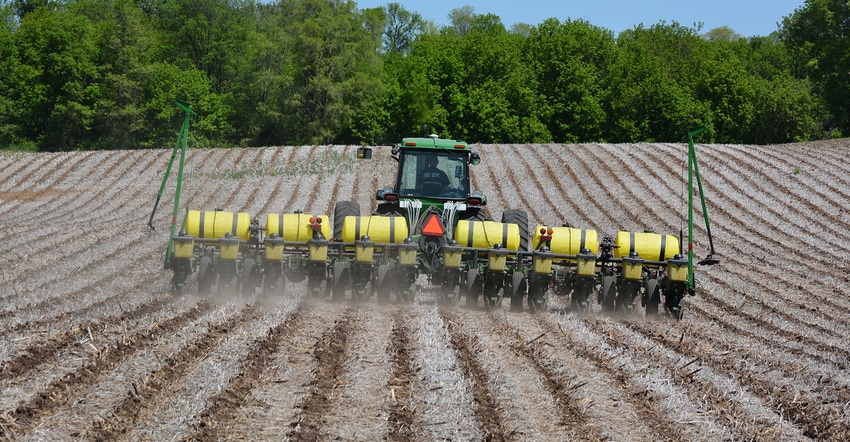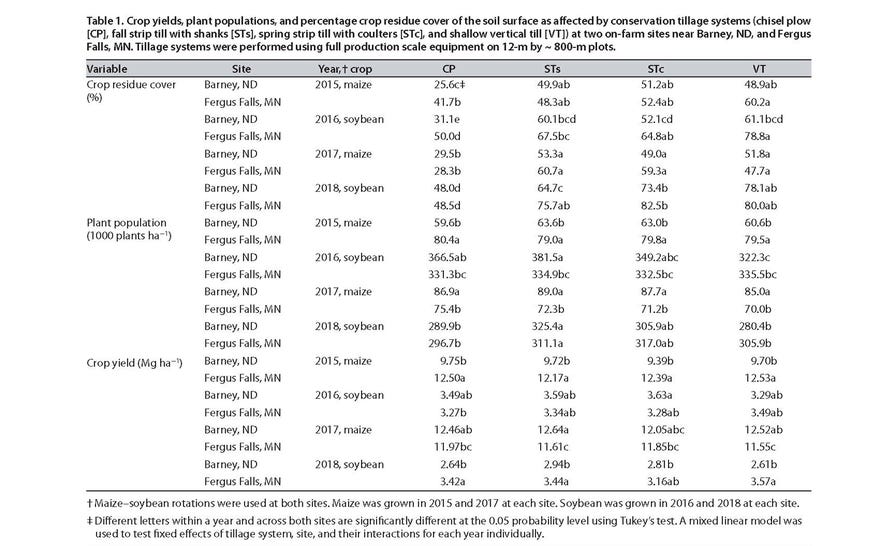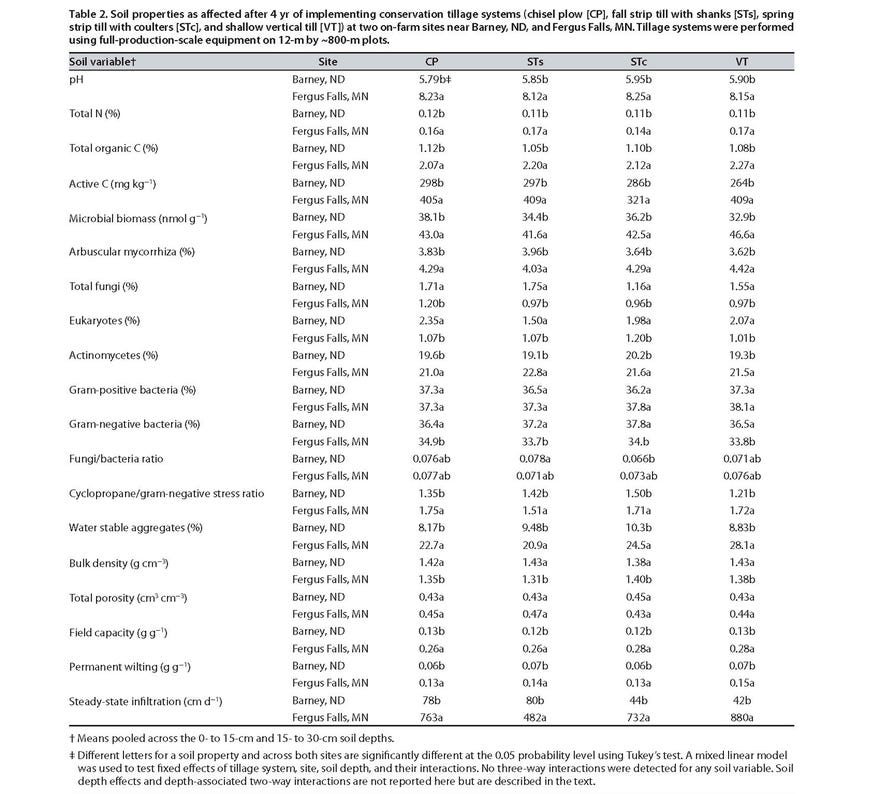December 5, 2019

Does reduced tillage cause yield loss?
According to a four-year study by researchers at the University of Minnesota and North Dakota State University, the answer is no.
With support from Minnesota and North Dakota corn and soybeans commodity groups, scientists looked at how four Red River Valley on-farm tillage systems affected residue cover, stand populations, crop yields, and soil chemical, biological, and physical properties.
The tillage systems evaluated were chisel plow, vertical tillage, strip till with shank and strip till with coulters.
Studies were established in 2014 on two farms near Barney, N.D., and Fergus Falls, Minn., that had more than a 30-year history of tilled row crop production. A third farm near Mooreton, N.D., was added in 2015. Dominantsoils were fine sandy loams at the Barney site, loams and clay loams at the Fergus Falls site, and clayey soils at the Mooreton location. Full-scale equipment was used in the studies.
Soil moisture and temperature results
During each spring and early summer, the chisel plow and strip-till berms consistently had the driest and warmest soil conditions (Tables 1 and 2, shown below).
 Source: A&EL
Source: A&EL

These were followed by the areas between the strip-till berms and vertical till. Finally, no-till had the wettest and coolest soil conditions.
Differences due to soil types
Most notably, drying and warming differences among the tillage practices were greatest at the farm with sandy soils and moderate at the farm with loamy soils, and minimal at the farm with clayey soils (data not shown).
 Source: A&EL
Source: A&EL

As the surface of these clay soils dry, it is likely that moisture is more readily replaced by the capillary rise of deeper water than what would occur in the sandy soils.
Impacts on plant population, growth and yields
The trends in soil moisture and temperatures did not cause any differences in soybean or corn plant populations, growth or yields. Soybean yield was not affected by tillage at any of the farms during the four growing seasons, except on the farm with sandy soils near Barney in 2018 (Table 1). At that farm, both strip tills — with shanks or coulters — yielded 3.7 bushels per acre more on average than the chisel plowing and shallow vertical till.
Yield difference trends were observed in corn in some years, but these differences were not consistent year-to-year, farm-to-farm or among the tillage practices. Instead, benefits or consequences to corn yields were explained by whether timely fertilizer application and placement was done or whether soil conditions were too wet for proper tillage operations.
The data from this research shows that crop producers can do less tillage and leave more residue on the soil surface while maintaining their yields.
Source: University of Minnesota Extension, which is solely responsible for the information provided and is wholly owned by the source. Informa Business Media and all its subsidiaries are not responsible for any of the content contained in this information asset.
You May Also Like




